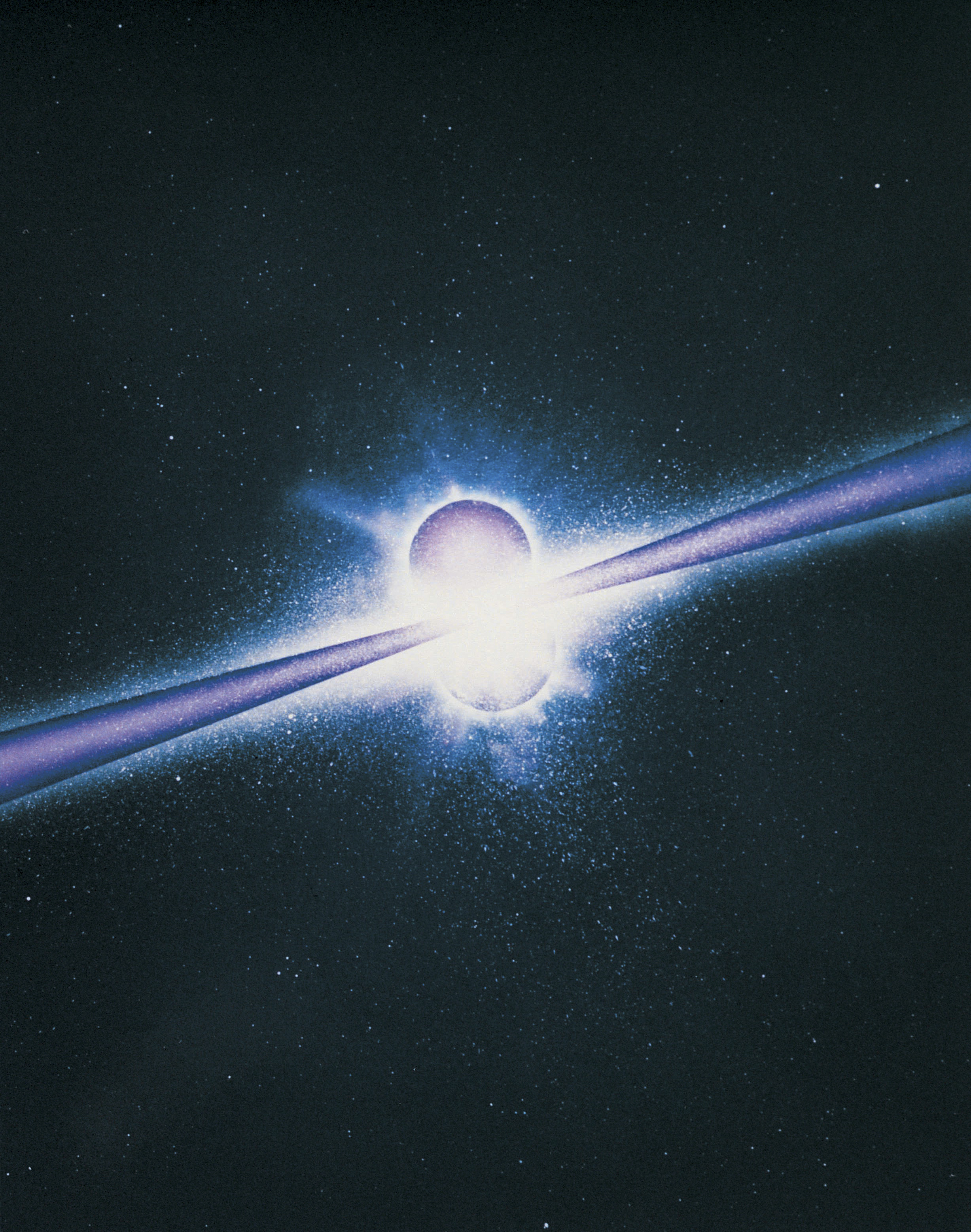A Mysterious Burst of Energy in Space Has Smashed Records

Credit to Author: Maddie Bender| Date: Wed, 20 Nov 2019 18:38:48 +0000
For the first time, astrophysicists have observed a cosmic explosion emit particles that are a trillion times more energetic than visible light, a record-setting measurement from a phenomenon that scientists are still seeking to fully understand.
The observation of this powerful gamma-ray burst (GRB), as these explosions are known, adds another layer to what scientists think happens when a star implodes. The findings were published on November 20 in two papers in the journal Nature.
When a star dies, its insides no longer support its own mass, and it crashes upon itself. This self-collision compresses the star’s core into a neutron star or a black hole, while generating explosions that produce a supernova. These explosions are GRBs, and they produce short-lived jets of extremely energetic light. GRBs may also occur when two neutron stars collide. They happen on a daily basis, and release as much energy in a few seconds as our Sun will emit in its entire 10 billion years of life. Until now, however, no telescope had observed a GRB emit photons (light particles) on the order of a teraelectronvolt, or TeV.
“Such a strong signal has never been measured in ground-based gamma ray astronomy — this is the first time,” said Razmik Mirzoyan, the spokesperson and senior astrophysicist of the MAGIC collaboration, the group that manages the telescopes that made the observation.
After the GRB was detected, telescopes on the island of La Palma in the Canary Islands quickly adjusted to observe it. The telescopes are overseen by the MAGIC collaboration, weigh 64 tons each, and were designed to measure extremely high-energy emissions from gamma-ray bursts. They automatically process alerts from satellites and adjust to face the bursts in less than a minute. A fast response time is crucial: Gamma-ray bursts can last from a fraction of a second to mere minutes.
Elena Moretti was one of the scientists working the night of the GRB's detection, and a co-author of the two studies.
“When I saw the signal that we could see more or less directly, it was fantastic. I could not believe it,” she said.
Astrophysicists had been searching for TeV photons from GRBs for decades, Moretti said, and this observation was due to a mix of luck and preparation.
The burst came from a progenitor star that was 4.5 billion light-years away, according to the studies—relatively close, astronomically speaking. The farther away high-energy particles are from Earth, the more likely they are to be absorbed by extragalactic background light and not reach our telescopes.
After verifying that the GRB observed emitted photons in the TeV range, scientists realized the process used to explain and model these bursts could not account for such a high energy. Instead, Moretti said they are nearly certain that the emitted photons were raised to a TeV-level energy after colliding with nearby electrons.
“I'm sure that after our publication there will be an avalanche of other publications because we provide all the data to the community,” Mirzoyan said. Researchers can use the data to pursue their own models and theories, and ultimately, they may be able to probe at specific causes and mechanisms, which are still unknown, he added.
Gamma-ray bursts are mysterious—we don’t know the details of how and when these high-energy particles are emitted, according to Moretti.
She added that the observation should make people appreciate the curiosity driving scientific progress, even if they themselves aren’t astrophysicists.
“It's interesting to see how many things happen in the universe that are so different from us,” Moretti said. “That we know all this is mostly driven from curiosity, because we look at the stars we ask ourselves, ‘But why?’”
This article originally appeared on VICE US.